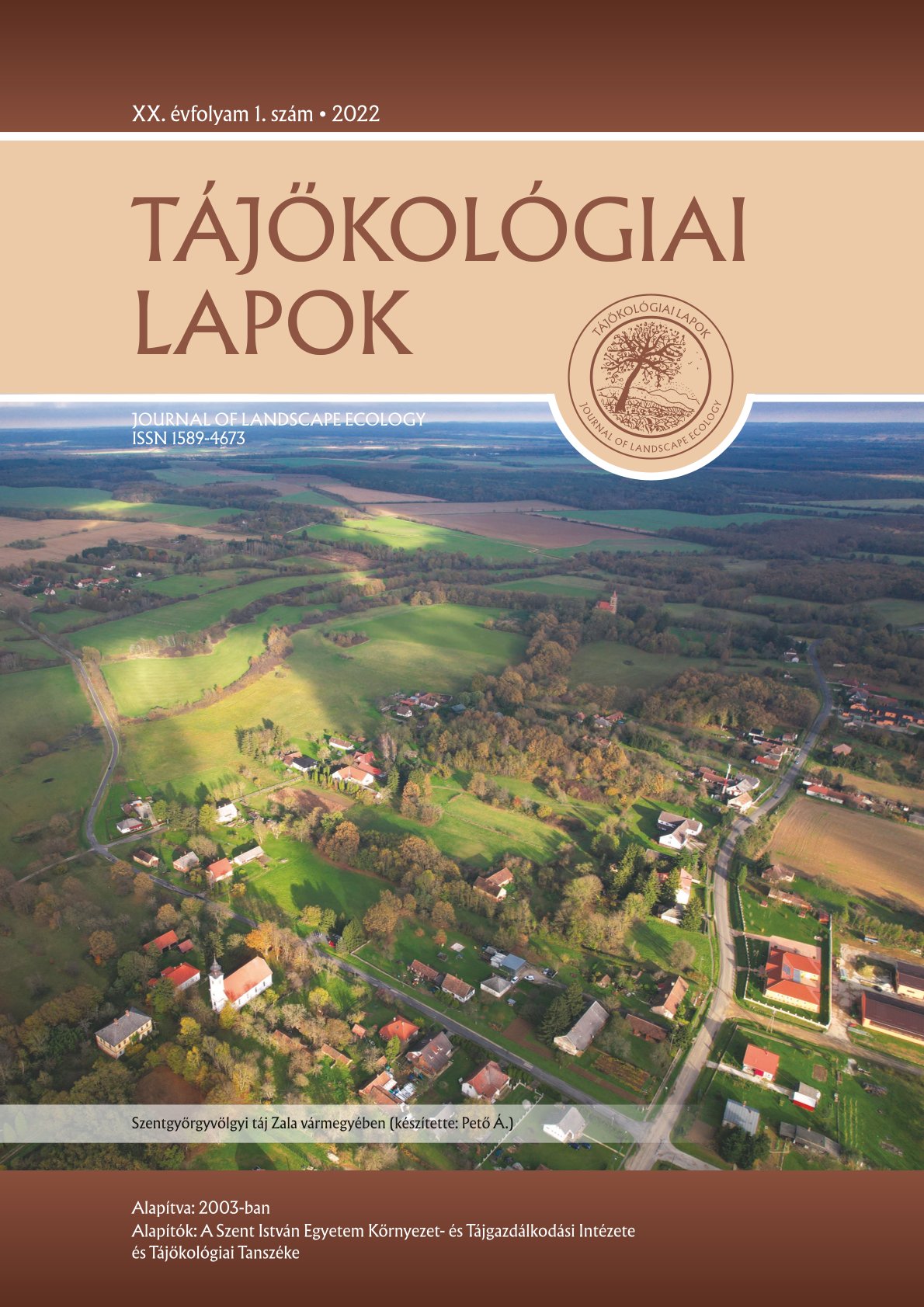On the use of population rekonstruction in mouflon: opportunities and weaknesses
DOI:
https://doi.org/10.56617/tl.3379Keywords:
mouflon, population-reconstruction, Országos Vadgazdálkodási Adattár, population estimationAbstract
In this study, we analyzed the reliability of the reported mouflon population size in the spring, using data available for Borsod-Abaúj-Zemplén and Heves county and national recordings. We analyzed the period between 1994-2019 by applying population-reconstruction using trophy scoring data. After that, we compared the results of our population-reconstructions with the reported mouflon population sizes. The population-reconstruction method allows us to collect information about our researched population (sex ratio, age composition) years after the data collection. The most significant benefit of this method is that we use the number of age classes of scored trophies, which means that there is no need to rely on the data reported by wildlife managers exclusively. During the reconstruction of our population, we used the corresponding data throughout multiple years of calculations, which will result in less fluctuation regarding the outcome. This also results in a high expected correlation between the number of hunted individuals and the reconstructed population's size. After revealing some typical changes in the data/calculations, we divided the whole sets into two parts (1994-2002, 2003-2011). This decision relied on the fact that every single one of the studied territorial units deviated from the expectations in 2002. In summary, we can say that Borsod-Abaúj-Zemplén county and the national reports reveal similar values. Meanwhile, Heves county’s differs from the previous territories meaning that the number of hunted male individuals and scored trophies were too different. It is a clear indication that the data set did not include all trophies.
References
Caughley, G. 1977: Analysis of vertebrate populations. J. Wiley & Sons, Chichester/New York/Brisbane/ Toronto. p. 226.
Csányi S. 1987: Vadállományok dinamikája és hasznosítása. Jegyzet vadgazdálkodási szakmérnökök részére. GATE Állattani és Vadbiológiai Intézet, Gödöllő, p. 152.
Csányi S. 2002: Populáció-rekonstrukció alkalmazása a muflonállomány létszámának meghatározására. Vadbiológia 9: 54–65.
Csányi S. 2007: Vadbiológia. Mezőgazda Kiadó, Budapest. p. 135.
Csányi S., Márton M. 2016: A vaddisznó jelentett létszáma, mint a hasznosítás sikerességének indexe? Vadbiológia 18: 35–43
Csányi S., Tóth P. 2000: Populáció-rekonstrukció alkalmazása a hazai gímszarvas állomány létszámának meghatározására. Vadbiológia 7: 27–37.
Demeter A., Kovács Gy. (1991): Állatpopulációk nagyságának és sűrűségének becslése. Akadémiai Kiadó, Budapest.
Faragó S. 2002: Vadászati állattan. Mezőgazda Kiadó, Budapest.
Faragó S. 2009: Vadász enciklopédia. Totem Plusz Kiadó, Budapest.
Faragó S., Náhlik A. 1997: A vadállomány szabályozása. Mezőgazda Kiadó, Budapest.
Hoffmann, G. 1974. Méthodes de recensement des populations de cerf (Cervus elephus) et chevreuil (Capreolus capreolus). Bulletin de l'Officce National de la Chasse (Spéc. No. 2.): 3–34.
Kőhalmy T. 1994: Vadászati enciklopédia. Mezőgazda Kiadó, Budapest.
Majzinger I. 2007: A magyarországi őzállomány létszámának meghatározása populáció-rekonstrukcióval. Vadbiológia 13: 11–23.
Mátrai G. 1980: A muflon és vadászata. Mezőgazdasági Könyvkiadó Vállalat, Budapest.
Szemethy L., Bíró Zs. 2005: Emlősök anatómiája és élettana. Egyetemi jegyzet. Szent István Egyetem, Vadgazda Mérnök Szak, Vadbiológia és Vadgazdálkodási Tanszék, Gödöllő, p. 107. + Melléklet p. 20.
Szemethy L., Bíró. Zs., Heltai M. 2005: Vadászati állattan és etológia. Emlősök. Egyetemi jegyzet. Szent István Egyetem, Vadgazda Mérnök Szak, Vadbiológia és Vadgazdálkodási Tanszék, Gödöllő, p. 103.
Tóthné Lőkös K. 2006: Statisztika példákon keresztül. Egyetemi jegyzet. Szent István Egyetem, Vadgazda Mérnöki Szak, Vadvilág Megőrzési Intézet, Gödöllő. p. 120.
Urr A., Mátrai K. 2000: A muflon élőhelyhasználata egy dombvidéki élőhelyen Magyarországon. Vadbiológia 7: 54–62.
Downloads
Published
Issue
Section
License
Copyright (c) 2022 Major Fanni, Csányi Sándor

This work is licensed under a Creative Commons Attribution-NonCommercial-NoDerivatives 4.0 International License.
A folyóirat Open Access (Gold). Cikkeire a Creative Commons 4.0 standard licenc alábbi típusa vonatkozik: CC-BY-NC-ND-4.0. Ennek értelmében a mű szabadon másolható, terjeszthető, bemutatható és előadható, azonban nem használható fel kereskedelmi célokra (NC), továbbá nem módosítható és nem készíthető belőle átdolgozás, származékos mű (ND). A licenc alapján a szerző vagy a jogosult által meghatározott módon fel kell tüntetni a szerző nevét és a szerzői mű címét (BY).












